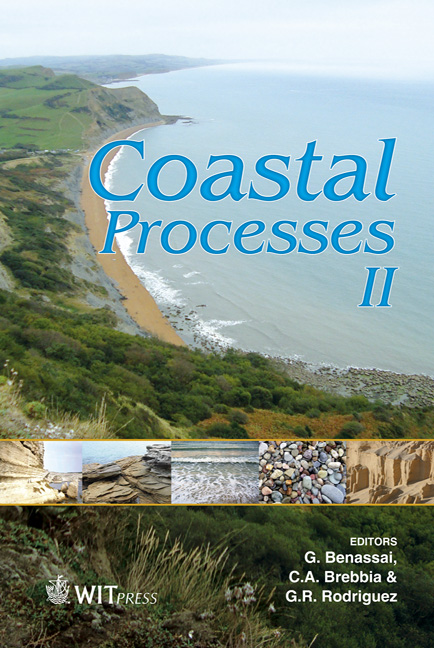Connecting River To Sea By A 2-D Mathematical Model
Price
Free (open access)
Transaction
Volume
149
Pages
7
Page Range
227 - 233
Published
2011
Size
399 kb
Paper DOI
10.2495/CP110191
Copyright
WIT Press
Author(s)
A. Astaraki & F. Fallah
Abstract
A two dimensional mathematical model is presented to simulate flow and suspended sediment transport in rivers. A two dimensional horizontal depth average model computes the flow characteristics. The hydrodynamic model uses a fully implicit finite difference numerical scheme with variable grid size. By solving the equation of sediment transport, the sediment concentration will be calculated. The depth variations could be computed by solving continuity equation of sediment. In this Paper, verification of the model and ability of Model in the field of connecting a river to the sea is shown by figures. Keywords: mathematical modeling, suspended sediment transport, sea, river. 1 Introduction In recent decades a lot of numerical and physical models have been developed in the field of river engineering. Physical models are generally very timeconsuming, costly and for many practical problems, impossible, while mathematical models are becoming more popular because of low cost, flexibility in design for changing different plans, ability to simulate riverbed deformation under large scale and long term conditions and they also provide a large quantity of information. However any mathematical model is faced with some problems, for example using concept of equilibrium sediment transport is an important problem in mathematical models. In this model a 2-D mathematical model of flow and suspended sediment transport has been developed for alluvial rivers in which concept of nonequilibrium sediment transport is used. In the concept of equilibrium suspended sediment transport, sediment transport capacity is supposed to be equal with sediment concentration while alluvial rivers are
Keywords
mathematical modeling, suspended sediment transport, sea, river





